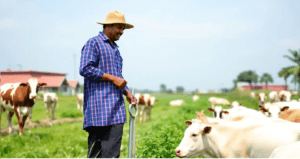Sexed Semen Technology: 5 Powerful Ways It’s Transforming India’s Dairy Industry – But At What Cost?
Sexed semen technology is revolutionizing India’s dairy industry by ensuring a 90% chance of female calves, benefiting small farmers who rely on milk production for income. Male cattle, often seen as a financial burden, are being phased out, reducing stray cattle numbers. Government-backed centers and private institutions are driving its adoption, with subsidies making it affordable for farmers. The process involves sorting X and Y chromosomes, inactivating male-producing Y chromosomes, and preserving female-producing X chromosomes.
However, concerns remain about its lower conception rate compared to traditional methods and potential harm to sperm vitality. Biodiversity experts warn that excessive reliance on a few high-merit bulls could lead to genetic uniformity, threatening indigenous breeds. To counteract this, experts suggest using a mix of bulls and prioritizing native cattle. While the technology holds great promise, careful implementation is crucial to ensure long-term sustainability in India’s dairy sector.

Sexed Semen Technology: 5 Powerful Ways It’s Transforming India’s Dairy Industry – But At What Cost?
Sexed semen technology is reshaping India’s dairy sector, offering farmers a way to boost milk production while addressing challenges like stray cattle. However, experts highlight potential risks to biodiversity that require careful attention.
Helping Farmers Thrive
For small-scale dairy farmers like Ravindra Mawi from Uttar Pradesh, this innovation is a game-changer. His cow, Lakshmi, was inseminated with sexed semen, which offers a 90% chance of producing a female calf. Female calves are prized for milk production, unlike males, which many farmers see as a financial burden. Raising a bull costs ₹4,000–10,000 per month, leading some farmers to abandon them. With more female cattle, farmers like Mawi can secure a steady income from milk sales.
The Indian government views this technology as a dual solution—reducing stray cattle populations while increasing milk yields. Facilities like the Babugarh Deep Frozen Semen Production Centre in Uttar Pradesh, established in 2019, have already produced two million doses. Similar government and private centers operate in Gujarat, Madhya Pradesh, Tamil Nadu, and Uttarakhand. While success rates are not fully documented, the push for widespread adoption remains strong.
How It Works
The science behind sexed semen involves separating sperm cells carrying X (female) and Y (male) chromosomes. Using a special dye and laser or electromagnetic sorting, technicians isolate X chromosomes while inactivating Y ones. This process ensures semen doses are enriched for female births.
Originally developed by U.S. firms, the technology is now part of India’s Rashtriya Gokul Mission (2018), which aims to improve cattle breeding. Each dose costs between ₹1,000 and ₹2,200, but government subsidies make it more affordable. For example, in Uttar Pradesh, farmers pay just ₹100 per dose. To reduce dependence on foreign technology, Indian institutes like IIT Delhi and the Indian Veterinary Research Institute are developing homegrown alternatives. One focus is a “label-free” technique to avoid the use of dyes, which some experts fear could harm sperm DNA.
Hurdles and Concerns
Despite its promise, the technology faces challenges. Conception rates with sexed semen are around 30%, lower than the 40–45% success rate of traditional artificial insemination. This is partly because each dose contains fewer sperm cells, and exposure to room temperature during sorting may weaken sperm quality.
Biodiversity risks are another concern. According to India’s 2019 Livestock Census, there is only one male for every 13 female cattle. Widespread use of sexed semen could further reduce male populations, shrinking genetic diversity. Over-reliance on a few high-quality bulls for semen production could also lead to genetic uniformity, mimicking “cloning” and weakening the resilience of cattle breeds.
Experts recommend balancing sexed semen use with strategies to preserve genetic variety. Promoting indigenous breeds over crossbreeds and rotating bulls for breeding could help maintain a healthy gene pool.
Looking Ahead
Sexed semen offers clear benefits: higher milk yields, fewer stray cattle, and better financial stability for farmers. However, its success depends on responsible implementation. Policymakers must ensure that increasing milk production does not come at the cost of biodiversity. Encouraging diverse breeding practices and supporting indigenous cattle breeds could help achieve this balance.
As India strives to lead global dairy production, integrating technology with sustainable practices will be essential. Farmers, scientists, and policymakers must collaborate to address challenges and ensure that the dairy sector grows without compromising livestock health and genetic diversity.
You must be logged in to post a comment.